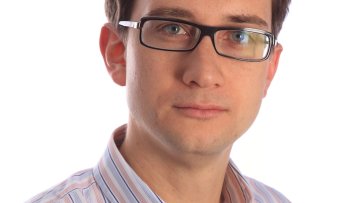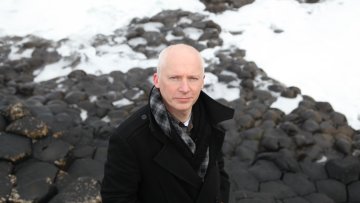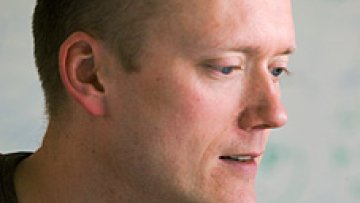Congratulations to Jan Obloj who has been awarded the title of Professor in the University of Oxford's annual Recognition of Distinction exercise.
16:00
'Torsion points of elliptic curves and related questions of geometry of curves over number fields'.
Abstract
Seminar series `Symmetries and Correspondences'
Instance optimality for the maximum strategy
Abstract
We study the adaptive finite element approximation of the Dirichlet problem $-\Delta u = f$ with zero boundary values using newest vertex bisection. Our approach is based on the minimization of the corresponding Dirichlet energy. We show that the maximums strategy attains every energy level with a number of degrees of freedom, which is proportional to the optimal number. As a consequence we achieve instance optimality of the error. This is a joint work with Christian Kreuzer (Bochum) and Rob Stevenson (Amsterdam).
Oxford Mathematician and Charles Simonyi Professor for the Public Understanding of Science, Marcus du Sautoy, has received the award of Doctor of Science of the University of South Wales for his outstanding research record in mathematics and his exceptional contribution to the promotion of the public understanding of mathematics and science. He will receive the award on 13th July 2015.
Information processing in feedforward neuronal networks
Abstract
Feedforward layers are integral step in processing and transmitting sensory information across different regions the brain. Yet experiments reveal the difficulty of stable propagation through layers without causing neurons to synchronize their activity. We study the limits of stable propagation in a discrete feedforward model of binary neurons. By analyzing the spectral properties of a mean-field Markov chain model, we show when such information transmission persists. Addition of inhibitory neurons and synaptic noise increases the robustness of asynchronous rate transmission. We close with an example of feedforward processing in the input layer to cerebellum.
Localized Patterns & Spatial Heterogeneitie
Abstract
We consider the impact of spatial heterogeneities on the dynamics of
localized patterns in systems of partial differential equations (in one
spatial dimension). We will mostly focus on the most simple possible
heterogeneity: a small jump-like defect that appears in models in which
some parameters change in value as the spatial variable x crosses
through a critical value -- which can be due to natural inhomogeneities,
as is typically the case in ecological models, or can be imposed on the
model for engineering purposes, as in Josephson junctions. Even such a
small, simplified heterogeneity may have a crucial impact on the
dynamics of the PDE. We will especially consider the effect of the
heterogeneity on the existence of defect solutions, which boils down to
finding heteroclinic (or homoclinic) orbits in an n-dimensional
dynamical system in `time' x, for which the vector field for x > 0
differs slightly from that for x < 0 (under the assumption that there is
such an orbit in the homogeneous problem). Both the dimension of the
problem and the nature of the linearized system near the limit points
have a remarkably rich impact on the defect solutions. We complement the
general approach by considering two explicit examples: a heterogeneous
extended Fisher–Kolmogorov equation (n = 4) and a heterogeneous
generalized FitzHugh–Nagumo system (n = 6).
12:00
Einstein Metrics, Harmonic Forms, and Symplectic Manifolds.
Abstract
Six Oxford Mathematicians are among the 2015 London Mathematical Society prizewinners.
A Polya Prize was awarded to Professor Boris Zilber for his visionary contributions to model theory and its applications.
A Naylor Prize and Lectureship in Applied Mathematics was awarded to Professor Jon Chapman (pictured) for his outstanding contributions to modelling and methods development in applied mathematics.
Whitehead Prizes were awarded to the following:






